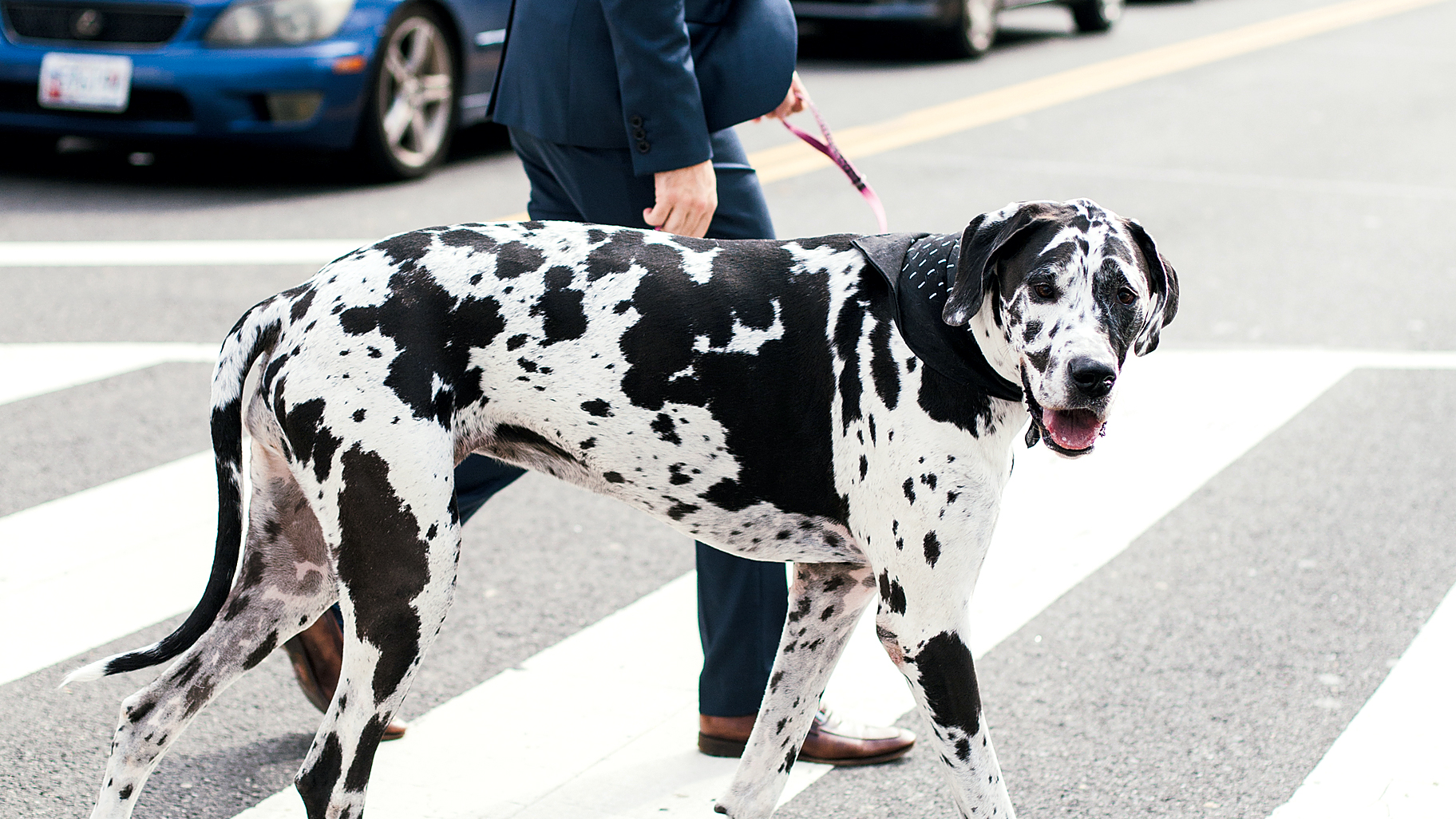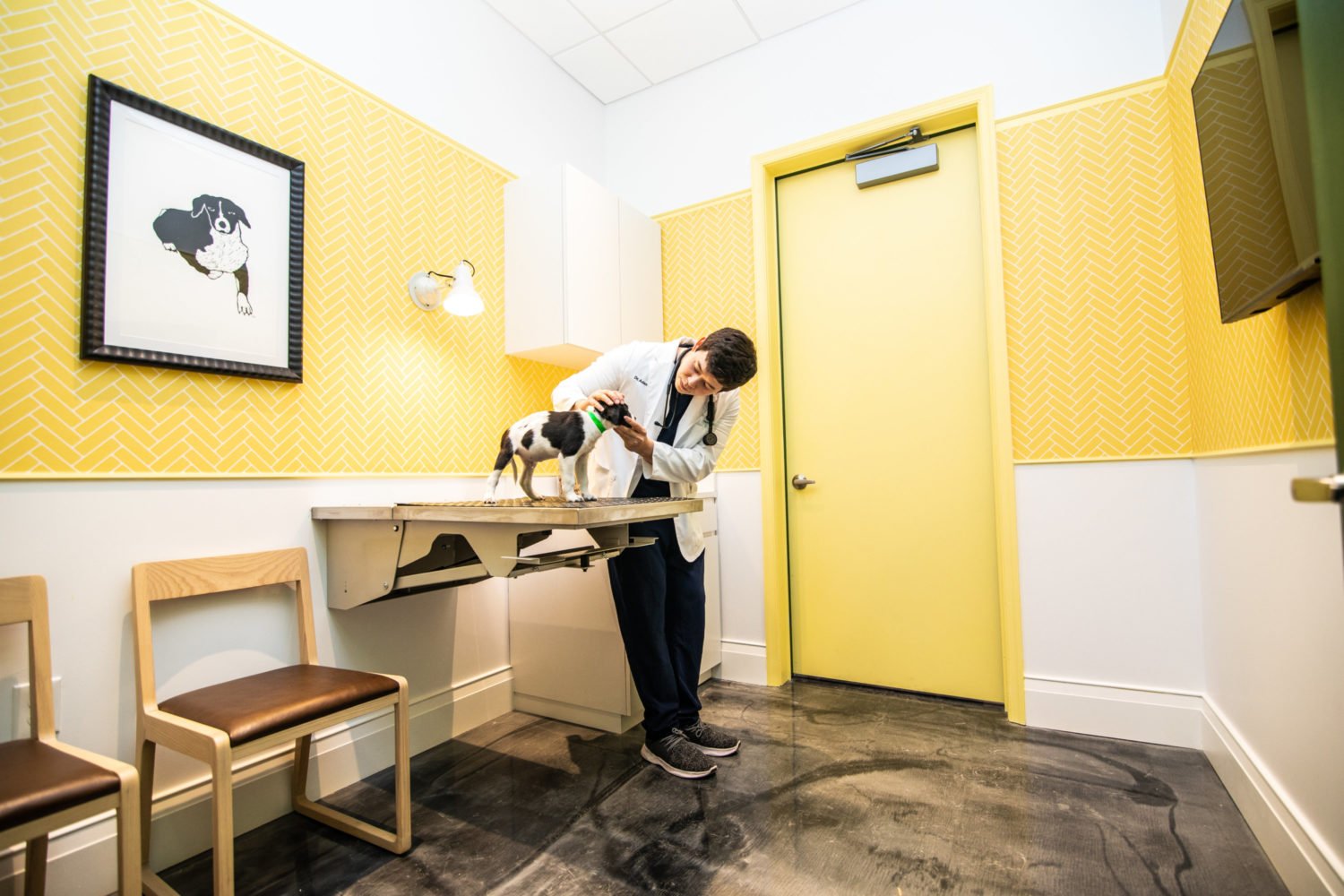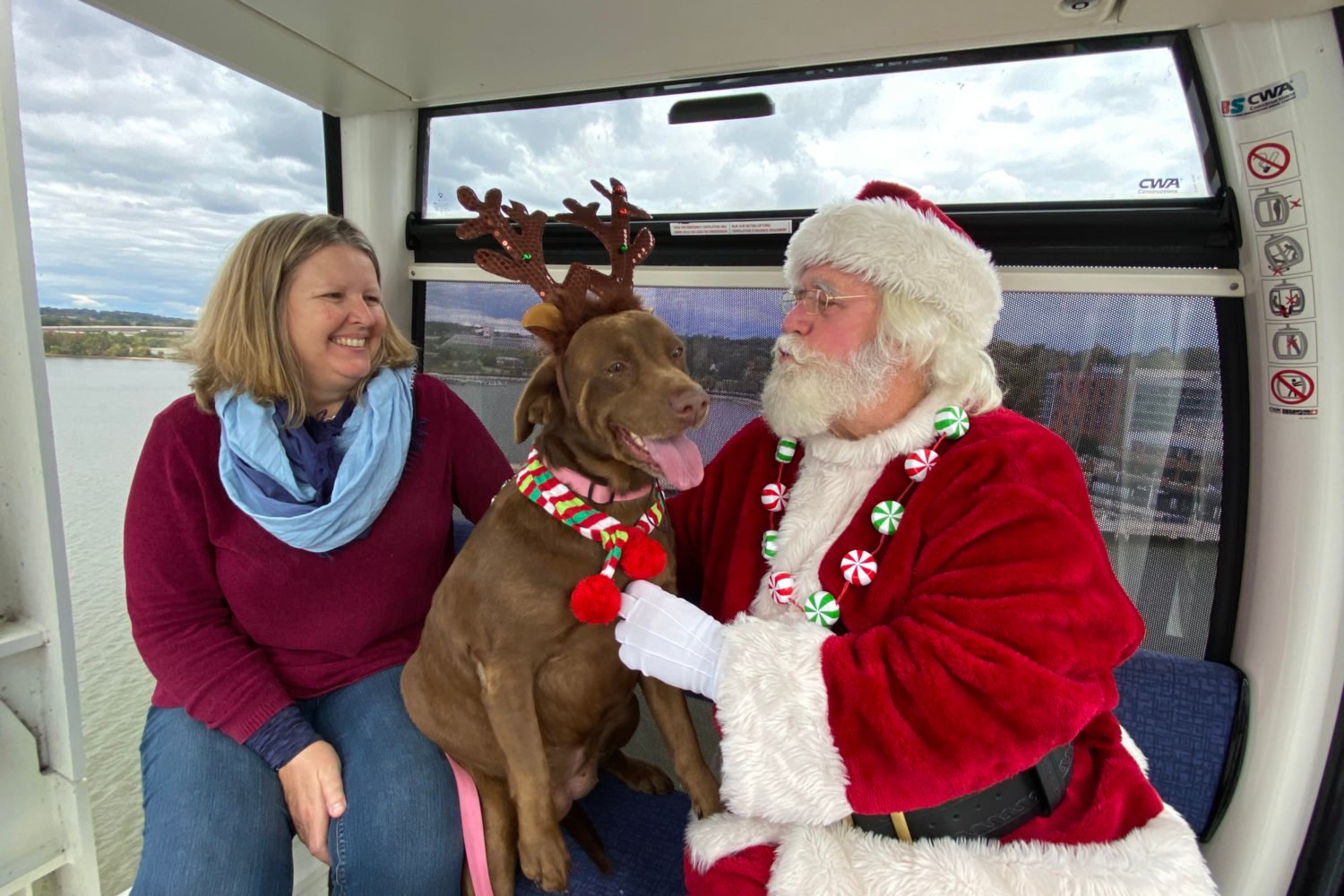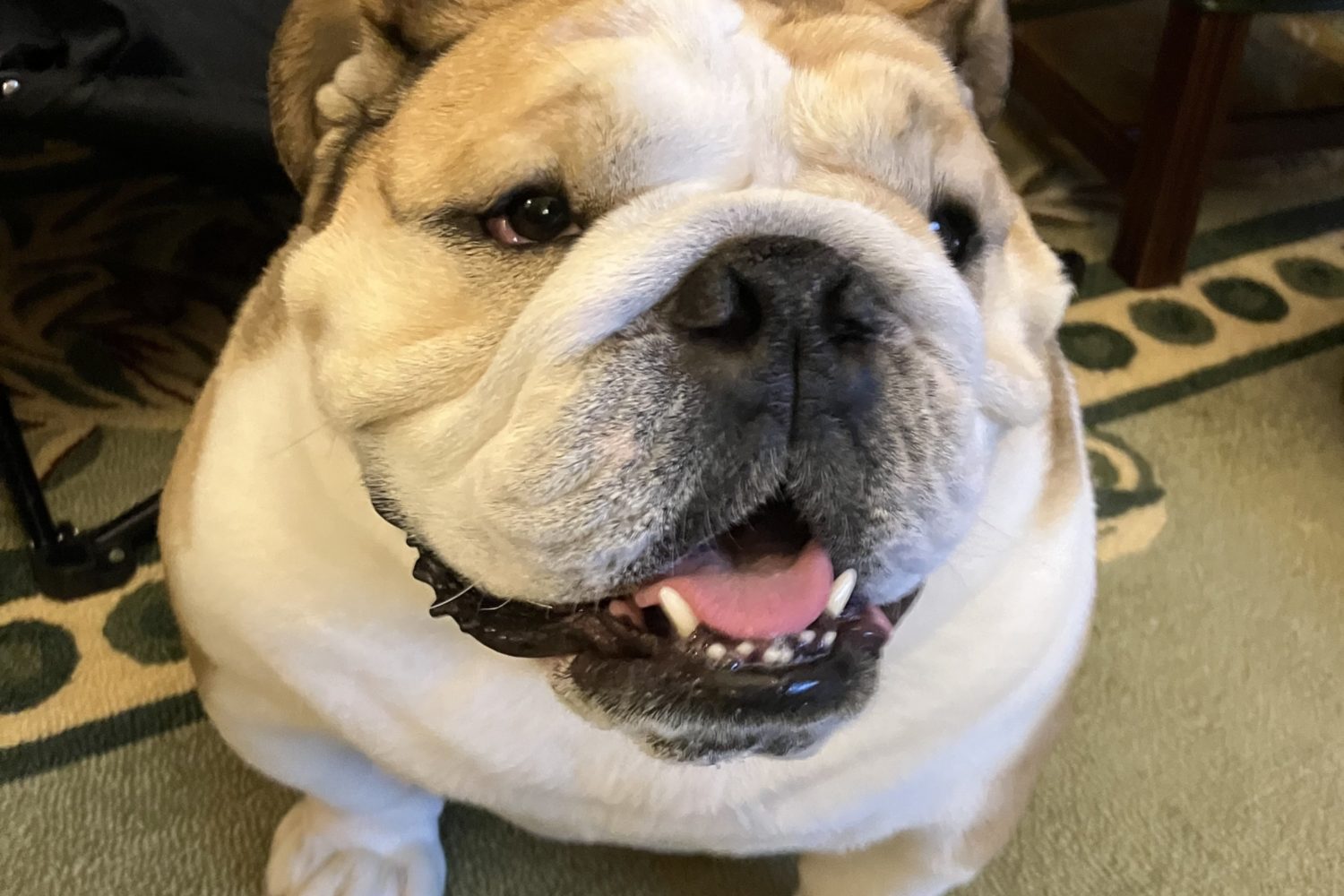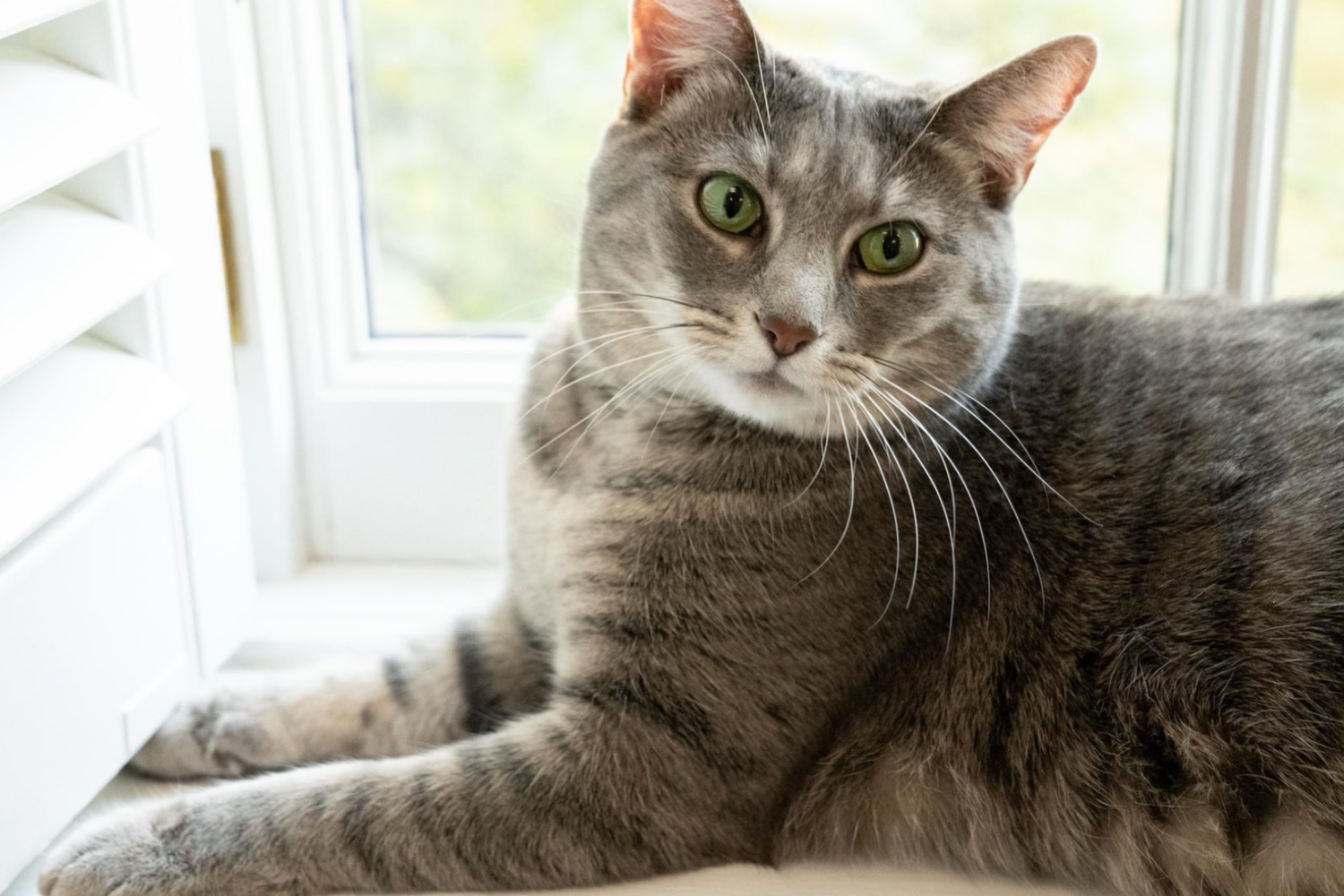Washington is more welcoming than ever to four-legged residents. In the dense, in-town neighborhoods that have boomed over the past decade, it can seem as though every new building touts fancy, pet-friendly amenities. But the hospitality tends to stop when a dog weighs as much as its human. Your beagle may be welcome in that swank new apartment, but Great Danes, mastiffs, and Saint Bernards need not apply.
It’s a shame Washington isn’t built for big dogs, because “giant” breeds are certainly built for Washington. Despite the buildings with rules against them, they manage to live and play happily all around town, often in spaces so small that their owners accommodate them by forgoing pieces of furniture. Though their size sometimes sends pedestrians scurrying across the street in fear, their guardians describe them as big babies, scaredy-cats, and—yes—lap dogs.
Chloe, a 140-pound Great Dane, lives with her dads on the tenth floor of the Atlantic Plumbing apartments in Shaw. Though she and her two foam dog beds—plus the 11 pounds of kibble she eats weekly—take up a lot of space, dad Stephen Rutgers says the setup is ideal. If she were injured and couldn’t walk, he and his husband could probably just wheel her into the elevator on the building’s luggage cart.
Chloe is so shy and gentle that she hides behind the two men in that elevator. Even so, she only gets to live in the building because she’s a registered emotional-support animal. Her breed generally isn’t allowed.
Veterinarian Dan Teich of District Veterinary Hospital says giant breeds get an unfair rap for being destructive and loud, when small dogs are more often a problem: “In my building on Capitol Hill, dogs under ten pounds drive us crazy.” He says big dogs “are often the ideal apartment-mates because they don’t do anything—they’re content to be next to you on the couch.”
Like all dogs, the giants do need exercise. But their style—more strolling than sprinting—requires less room than that of many smaller peers. Teich says they tend to deplete their energy in five minutes and often experience arthritis and joint problems at a younger age than smaller dogs.
Alex Picciano and his 100-pound Great Dane/boxer mix, Jordan, recently moved into a 600-square-foot studio in the RiverHouse Apartments in Pentagon City, where his girlfriend and her 40-pound hound mix, Mason, already lived. The building enforces restrictions on breed but not size, and both dogs are allowed. Although Jordan has a human-like reach, she doesn’t touch food on the coffee table or counter. If an animal is up to no good, they say, it’s typically Mason.
When John Benedetto adopted Capo, a 175-pound, barrel-shaped Neapolitan mastiff, the pair lived in a small Columbia Heights English basement. “I like having a dog that suits me physically,” says Benedetto, stocky and five-foot-eleven. Even more, he loves the sweet nature of large dogs.
In 2015, he bought a 900-square-foot rowhouse in Fort Totten and adopted a second rescue—Gusto, a 185-pound English mastiff: “I wanted Capo to have a friend.” He expected his first dog to get more exercise with a buddy. The dogs had their own agenda: napping together on the extra-large sofa, where they spend much of their time.
Brittany Peet and her 105-pound German-shepherd/husky mix, Wesley, live in a rented 600-square-foot condo in Mount Pleasant. They celebrated Wesley’s 12th birthday in March with about 15 friends in the sparsely furnished space.
“It can get a little tight,” says Peet. “But Wesley is very social. He enjoys having people here.”
This article appears in the May 2017 issue of Washingtonian.

